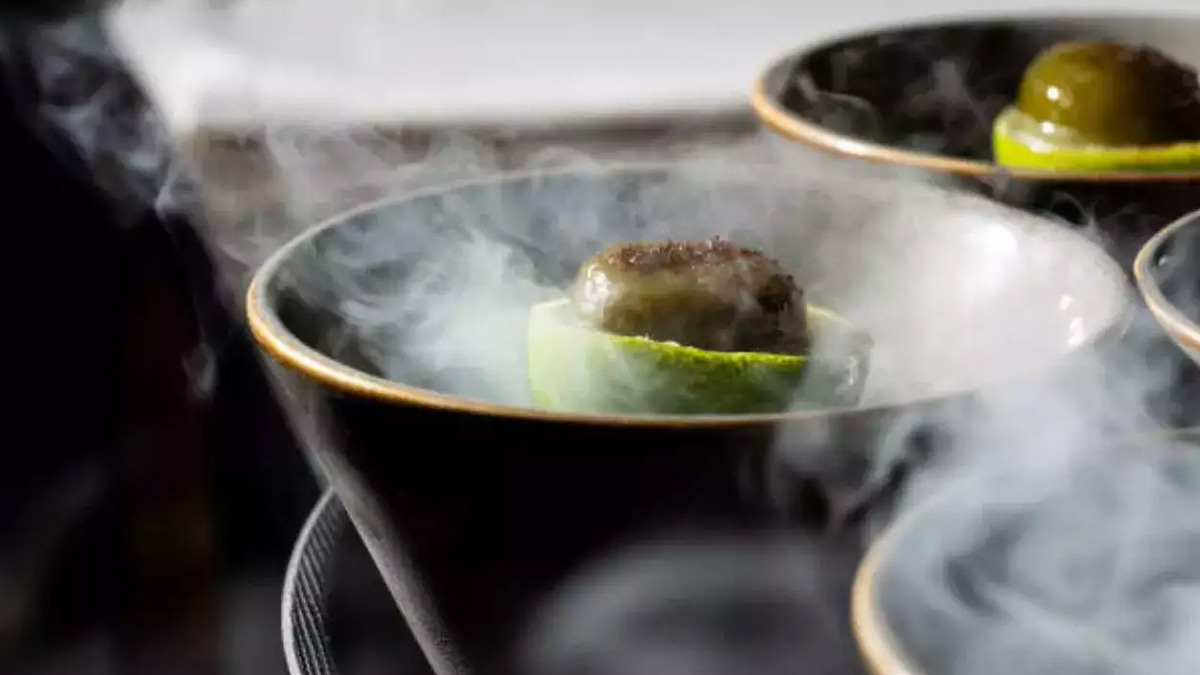
A 12-year-old girl in Bengaluru recently faced a life-threatening condition after consuming a 'smoky paan' infused with liquid nitrogen at a wedding. The incident sheds light on the severe health risks associated with the consumption of food products prepared with liquid nitrogen, especially when added immediately before consumption. This article explores the incident, the medical implications, and the broader health risks linked to liquid nitrogen in food.
Table of Content:-
The Incident: A Shocking Turn of Events
The young girl was enjoying a wedding celebration when she consumed the 'smoky paan,' a popular novelty treat. Shortly after, she experienced excruciating stomach pain and severe bloating, prompting her parents to rush her to a hospital. Upon examination, doctors discovered a tear in her stomach, which was filled with gas—a condition known as perforation peritonitis. This condition necessitated immediate surgical intervention, during which the damaged portion of her stomach was removed. The girl remained in the ICU for three days, recovering from this traumatic event.

Understanding Perforation Peritonitis
Perforation peritonitis is a medical emergency characterised by a hole in the stomach or intestines, allowing contents to leak into the abdominal cavity. This leakage leads to inflammation and infection of the peritoneum, the lining of the abdominal cavity. The girl's case was severe due to the introduction of extremely cold temperatures and gas into her stomach from the liquid nitrogen. The combination of physical and thermal shock caused the tear, emphasising the dangers of consuming foods prepared with liquid nitrogen.
Liquid Nitrogen in Food: A Popular Yet Dangerous Trend
Liquid nitrogen is often used in culinary applications to create dramatic visual effects, such as fog or smoke. Foods and drinks infused with liquid nitrogen, known by names like "Dragon’s Breath" or "Heaven’s Breath," have become popular in malls, food courts, and events. These products include colorful cereals, cheese puffs, and beverages that emit a misty vapour when consumed. However, the extremely low temperatures of liquid nitrogen can cause significant harm.
Health Risks of Liquid Nitrogen
While liquid nitrogen is non-toxic, its misuse can lead to severe injuries. The FDA has warned that liquid nitrogen can cause serious damage to skin and internal organs if mishandled or ingested. The extreme cold can result in frostbite and tissue damage, and inhaling the vapour can cause breathing difficulties, particularly for individuals with respiratory conditions like asthma.
Also Read: India Reports 324 Cases Of COVID-19 Sub-Variants KP.1 And KP.2.; Here's What You Need To Know
In the case of the 12-year-old girl, the consumption of liquid nitrogen-infused paan led to a perforation in her stomach due to the rapid expansion of gas and extreme cold. This incident is not isolated, as there have been reports of similar injuries from consuming or handling such products. The FDA has highlighted instances of severe and life-threatening injuries, including respiratory issues after inhaling the vapour.
Regulatory and Health Advisories
Health departments across the United States have issued warnings about the dangers of liquid nitrogen in food. For instance, in June, Suffolk County Commissioner of Health Services in New York, Dr. James Tomarken, cautioned against the potential for injury from liquid nitrogen products. The memo advised that residual liquid nitrogen should be fully evaporated before serving to prevent frostbite and internal damage.
Foods treated with liquid nitrogen before the point of sale, such as some frozen confections, generally do not pose significant risks because the nitrogen evaporates completely before consumption. However, products prepared and consumed immediately after liquid nitrogen is added remain hazardous.
Bottomline: A Call for Caution
The case of the young girl from Bengaluru serves as a stark reminder of the dangers posed by trendy culinary practices involving liquid nitrogen. Consumers should be aware of the severe health risks and avoid consuming or handling such products. The FDA urges anyone who has suffered an injury from these foods to seek medical attention promptly. While the visual appeal of liquid nitrogen-infused treats may be enticing, the potential for life-threatening injuries far outweighs the novelty, emphasising the need for caution and regulation in their preparation and consumption.
Also watch this video
Read Next
India Reports 324 Cases Of COVID-19 Sub-Variants KP.1 And KP.2.; Here's What You Need To Know
How we keep this article up to date:
We work with experts and keep a close eye on the latest in health and wellness. Whenever there is a new research or helpful information, we update our articles with accurate and useful advice.
Current Version